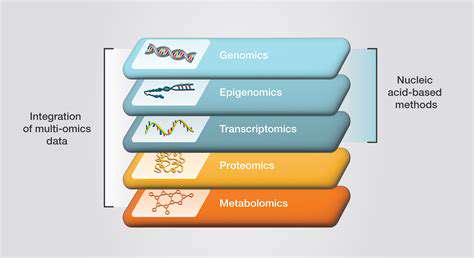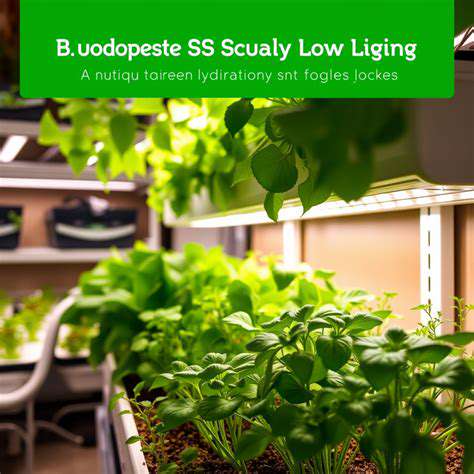How to Care for Your Indoor Plants
Understanding Your Plant's Needs
Different plants have different watering requirements, depending on their origin and specific characteristics. A desert succulent, for example, will need significantly less water than a tropical fern. Researching the specific needs of your plant is crucial for its long-term health and happiness. Understanding the plant's natural environment can often provide valuable clues regarding its watering preferences.
Consider factors like the size of the pot, the type of soil, and the ambient humidity levels in your home. These elements all play a role in how quickly water drains and evaporates, thus impacting the frequency of watering.
The Importance of Soil Moisture
A crucial aspect of watering wisely is understanding how to assess the moisture content of the soil. Avoid overwatering, as this can lead to root rot and fungal diseases, which are detrimental to plant health. Conversely, underwatering can cause wilting, leaf drop, and ultimately, plant death.
Developing a feel for the ideal moisture level in the soil is key. Stick your finger about an inch into the soil; if it feels dry, it's time to water.
Frequency and Amount of Water
The frequency of watering depends heavily on the specific plant, the pot size, the type of soil, and environmental conditions. A well-draining potting mix will require more frequent watering than a heavy clay-based soil. Avoid watering until the top inch or two of soil has dried out.
When watering, ensure you provide enough water to thoroughly saturate the soil, allowing excess water to drain out the drainage holes. Overfilling the pot with water is just as detrimental as underwatering.
Choosing the Right Watering Technique
Using a watering can with a gentle stream is often the best approach for most houseplants. This allows for a more controlled and even distribution of water. Avoid using a forceful spray, as this can dislodge the soil and damage the delicate roots.
Alternatively, you can use a bottom watering method for certain plants. This involves placing the pot in a tray of water and allowing the soil to absorb moisture from below. This can be particularly helpful for plants with shallow root systems.
The Role of Environmental Factors
Factors such as temperature and humidity significantly influence the rate at which water evaporates from the soil. During warmer months or in dry climates, your plants will require more frequent watering. Conversely, in cooler or more humid environments, watering less frequently may be sufficient.
Pay close attention to the signs of your plants. If they start to show signs of stress, such as wilting or yellowing leaves, adjust your watering schedule accordingly.
Understanding the Signs of Overwatering
Recognizing the signs of overwatering is just as important as knowing how to water properly. Look out for soggy soil, yellowing leaves, and the presence of fungal growth or mold. If you notice these signs, adjust your watering schedule immediately to prevent further damage.
Using a Moisture Meter
Investing in a moisture meter can significantly improve your ability to water your plants effectively. These meters provide a precise reading of the soil moisture, helping you avoid overwatering or underwatering. This tool ensures your plants consistently receive the right amount of water for optimal growth.
Regular monitoring with a moisture meter allows you to fine-tune your watering routine, resulting in healthier, more vibrant indoor plants.
Light Matters: Optimizing Sunlight for Your Indoor Plants

Harnessing the Power of Natural Light
Sunlight is a vital resource, offering a wealth of benefits beyond just providing light. Optimizing its use can significantly improve our well-being and reduce our reliance on artificial light sources, leading to substantial energy savings. Understanding how sunlight interacts with our environment and how to maximize its positive effects is crucial for sustainable living and creating comfortable spaces.
Harnessing the power of natural light involves more than just opening windows. It requires thoughtful design considerations, including strategic placement of windows, the use of light-reflective surfaces, and the selection of appropriate window coverings. Careful planning allows us to take full advantage of the sun's energy throughout the day and year.
Sunlight and Human Health
Exposure to natural light is essential for regulating our circadian rhythm, which impacts our sleep-wake cycle and overall mood. Sufficient sunlight exposure can contribute to a healthier and more positive mental state.
Studies have shown a correlation between exposure to natural light and reduced symptoms of Seasonal Affective Disorder (SAD). The positive effects of sunlight extend beyond mood regulation; it also plays a role in vitamin D synthesis, a crucial nutrient for bone health and immune function.
Architectural Considerations for Light Optimization
Clever architectural design can significantly enhance the way sunlight is utilized within a building. This involves carefully considering the building's orientation, window placement, and the use of reflective materials. By strategically positioning windows to maximize sunlight exposure during peak hours, architects can create brighter and more inviting spaces.
Light Control and Energy Efficiency
Effective light control mechanisms are essential for optimizing sunlight. These include using appropriate window coverings, such as blinds or shades, to regulate the amount of light entering a space. Careful consideration of window treatments can also dramatically influence energy consumption, reducing the need for artificial lighting.
Strategically placed mirrors or reflective surfaces can redirect and amplify natural light, illuminating areas that might otherwise remain shadowed. This simple technique can significantly improve the overall ambiance and functionality of a room.
Sustainable Practices and Sunlight
Utilizing natural light aligns perfectly with sustainable practices. By reducing reliance on artificial lighting, we decrease our carbon footprint and conserve energy resources. This approach not only benefits the environment but also translates into cost savings for homeowners and businesses.
The Role of Technology in Sunlight Optimization
Modern technology offers innovative solutions for maximizing the benefits of sunlight. Smart window technologies, for example, can automatically adjust light levels based on the time of day and weather conditions. This automation not only enhances comfort but also optimizes energy efficiency.
Sensors and automated systems can control window coverings, ensuring that the optimal amount of sunlight is directed into a space. This level of precision maximizes both well-being and energy conservation.











![Guide to Learning Basic [Specific Language] Phrases](/static/images/31/2025-07/ShoppingandBargaining28ifapplicable29.jpg)